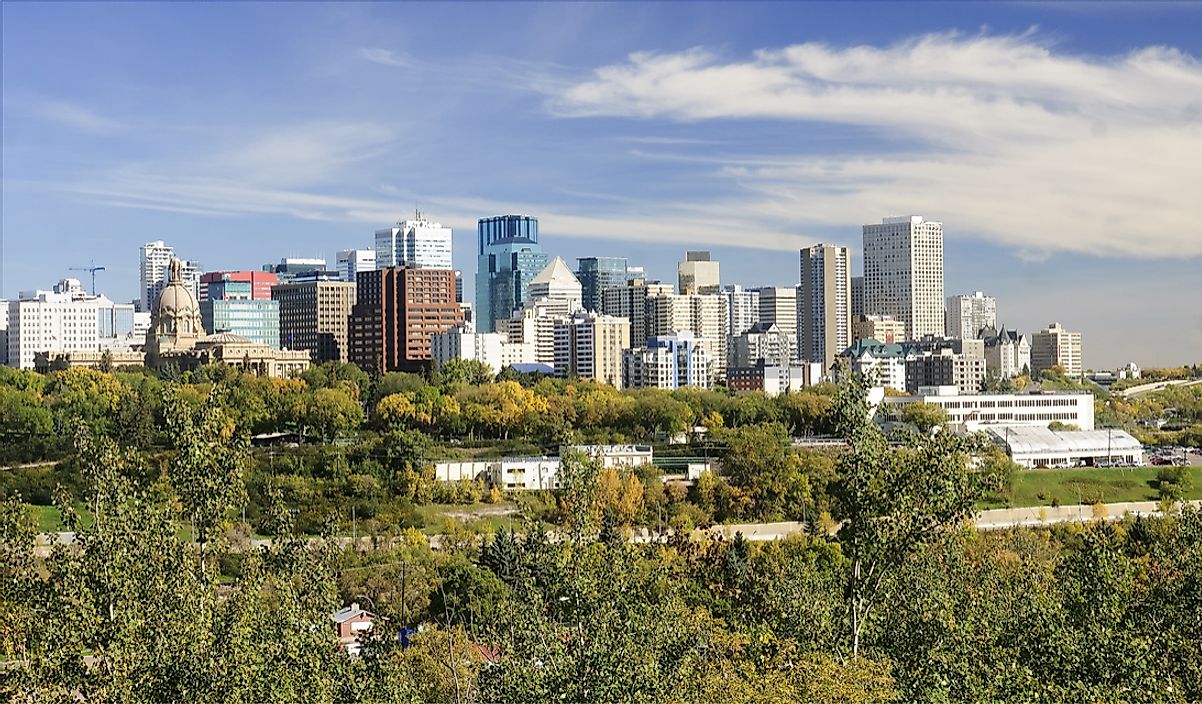What Is the Capital of Alberta?

Alberta is a landlocked province located in Western Canada, bordering Saskatchewan and British Columbia. It also borders the US state of Montana to the south. It covers an area of approximately 250,000 square miles. Alberta is the fifth most populous province in Canada with a population of about 4.1 million people. Edmonton is the capital of Alberta, and is the main supply and service hub for the country’s crude oil.
About Edmonton
Although Edmonton is the capital of Alberta, it is not the province’s largest city. The largest city in Alberta is Calgary. Edmonton is the center of the Edmonton Capital Region and is located on the North Saskatchewan River. The city has a population of about one million people, making it the fifth largest municipality in Canada. It is a cultural, governmental, and educational center, hosting year-round festivals as reflected by its nickname, “Canada’s Festival City.” The city is home to the West Edmonton Mall, North America’s largest mall, and Fort Edmonton Park, a living history museum in Canada.
Geography
Edmonton covers the area around North Saskatchewan River and has an elevation of 2,201 feet above sea level. It is the North America’s most northerly city with a metropolitan area greater than one million. The Edmonton region has a generally flat terrain, with a deep river valley, which includes the North Saskatchewan River Valley. Edmonton is also part of the Canadian Prairies Ecozones. The city experiences a humid continental climate, which is characterized by milds winters, with temperatures ranging from -10.40°C to 17.70°C. The summer period lasts from June to early September, while winter occurs between November and March. Edmonton receives an average of 18.78 inches of precipitation annually. Precipitation is frequent during spring, summer, and autumn.
Economy
Edmonton is the main economic center of Alberta. It is also a major center for oil and gas industry in Canada. The projects in the city were estimated to be worth about $58 billion in 2014, of which $34 billion was with the oil and gas sector. The city has been a hub for the petrochemical industries, with supply and service industries driving the energy extraction engine. Development in the technology sector is attributed to the city’s reputation as one of Canada’s premier research and educational centers. Several educational centers, such as the University of Alberta, are critical to research initiatives in the city. Edmonton was once a financial center, but the turmoil of the 1980s economy changed its status.
Government and Politics
Edmonton was incorporated as a town in 1892. The city is represented by a mayor and 12 representatives, known as councilors. The councilors are elected from each of the 12 wards to a four-year term. As capital of Alberta, Edmonton holds all main provincial areas of government, including the Provincial Legislature of Alberta. The Edmonton region is represented by twenty members of the legislative assembly from each of the provincial electoral districts.







